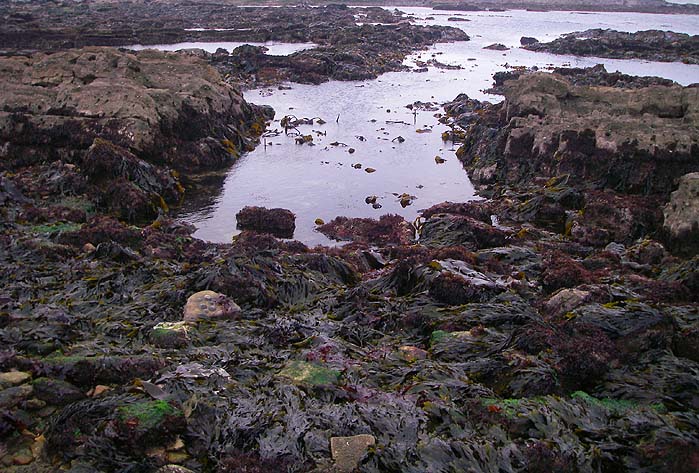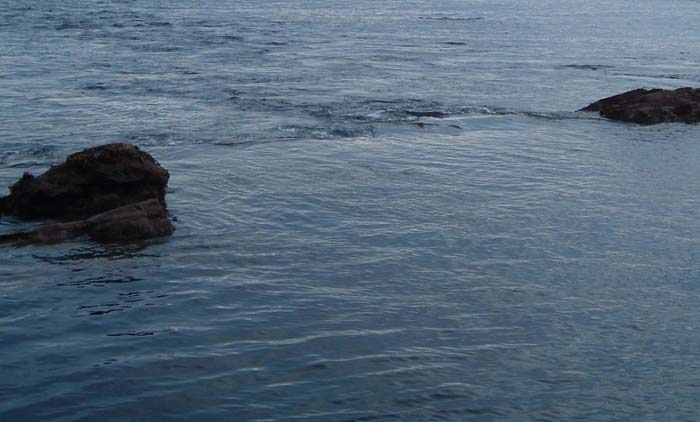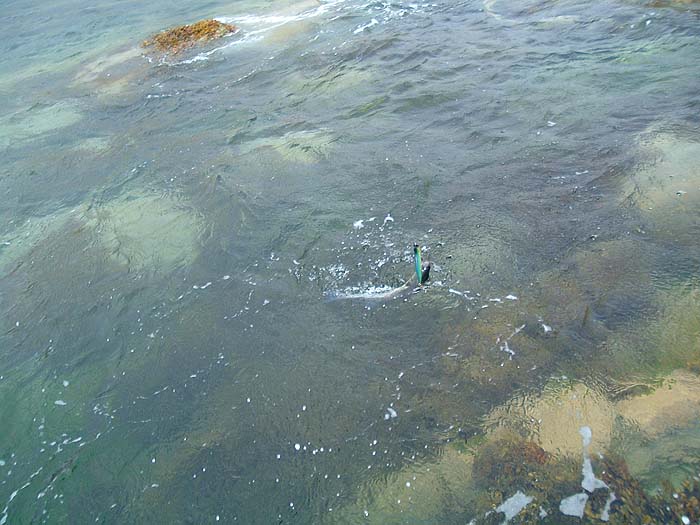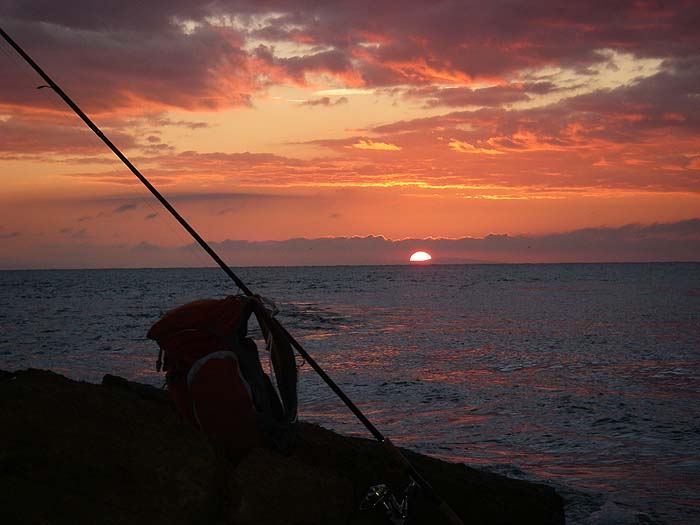 '
'Information Page.
"I want to catch a bass?".
Last weekend was a blank bassing session. Conditions were OK but the fish just weren't there - every angler knows the feeling. Anyway, the tide was very low so I took a couple of pictures just to remind me of what it was like under the water.
As usual, last week, I had one or two emails asking me for a few tips on catching bass on lures. This is a common request and usually I try to tailor the answer to the request. However, there are a number of common themes to these answers and I thought that it might be worthwhile doing a little pictorial page showing the main features to aim for if you are new to the sport."
Of course the precise conditions will differ according to where you live and the nature of the coastline but the following generalities will set you on the right track.
THE GROUND - Bass are pretty catholic in their tastes and will forage over everything from sticky estuarine mud to sandy strands to the rocky horror show. As a rule I suggest that snaggy or mixed bottoms will give the best chance of a decent fish and most of my own fishing is over rock and weed. If you want to catch fish on lures this sort of terrain presents a problem. Lures can be quite expensive and if your first couple of casts result in twenty ££££s worth of lost gear it is likely to put you off. So, what do you do? Have a look at low water to see where the main snags might be. Use a lure that floats and dives (= a shallow diving buoyant plug), fish on an incoming tide (so the water is getting deeper not shallower) and make sure that the plug does not plunge into the rocks by winding steadily and not too fast. If it's really snaggy and shallow try a surface popping lure.
THE WATER - Bass are powerful swimmers and they like plenty of water movement. It doesn't matter if it's shallow (<50cm) but choose a spot where there are strong tidal currents or alternatively a bit of a chop on the sea. Foaming white water is never a bad thing and over rocks it will usually be quite clear. If you can find a spot where there is a flowing current the fish will be trying to conserve energy so they will lie close to big boulders or gaps in rocky ledges. Try to get your plug as close to such places as you can without snagging. Before casting out bear in mind that the flow of water and/or the wind will carry your line and lure along, so make sure it's away from snags not towards them.
THE TIME - This is the bit that most people don't like but IT DOES MAKE A DIFFERENCE. Of course you can catch fish at any time of the day or night and bass are not as fussy as say conger (nocturnal) or wrasse (diurnal). However, bass (and many other predators including mackerel, pollack etc.) do feed best AS THE LIGHT CHANGES. If you really CAN'T get up in the morning then try to stay through dusk and I can guarantee improved results. In some spots it is so obvious that the fish start to bite as the sky lightens and then they stop as the sun rises. This may, at times, give you as little as twenty minutes serious fishing time. Of course fishing in the gloom means that you have to know the ground, both from the point of view of safety and to avoid slinging your precious lures into snags so it is often best to start in daylight and fish through dusk until you gain confidence.
If you have any comments or questions about fish, methods, tactics or 'what have you.'get in touch with me by sending an E-MAIL to - docladle@hotmail.com
Bass ground.
 '
'A gap at low water.
 '
'The gap on the flood tide.
 '
'White water.
 '
'Shallow water.
 '
'Change of light.
 '
'